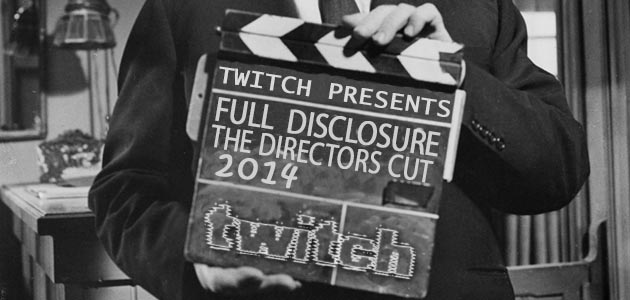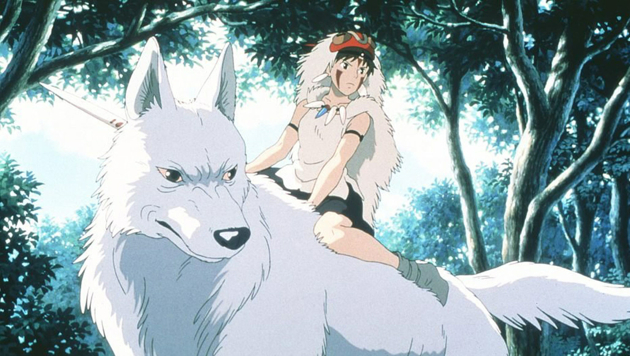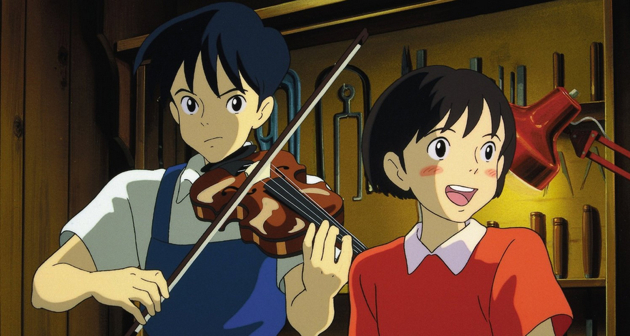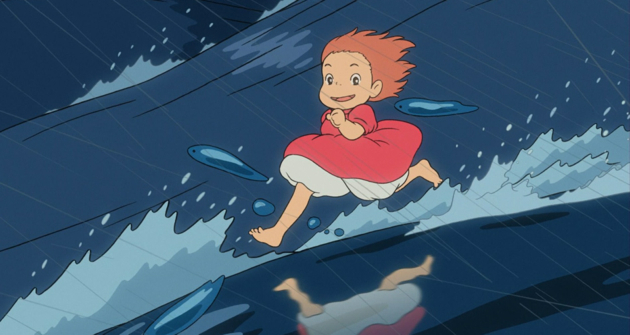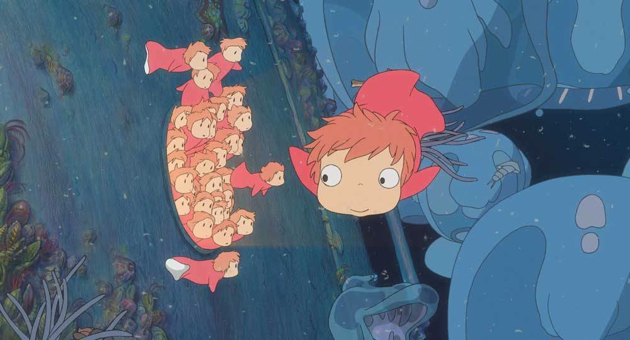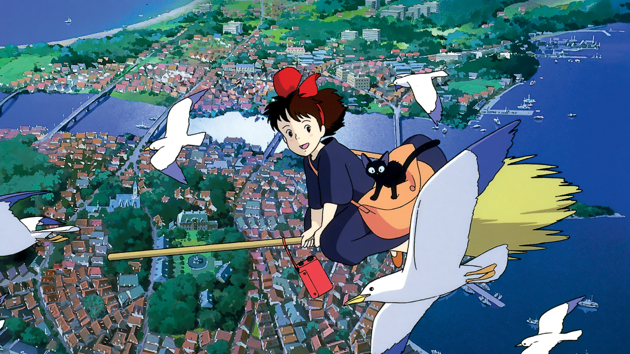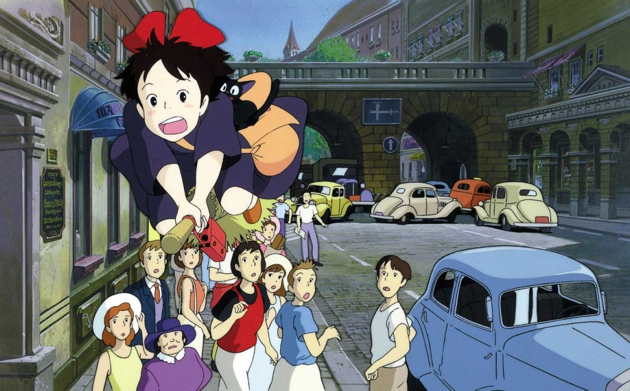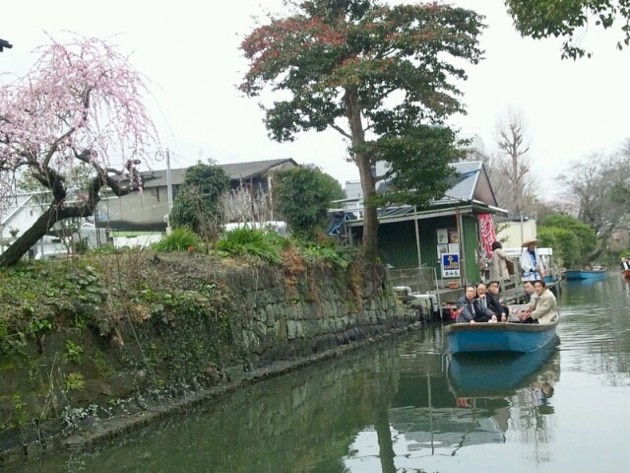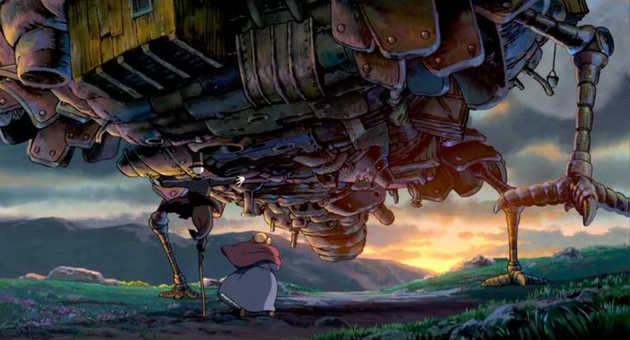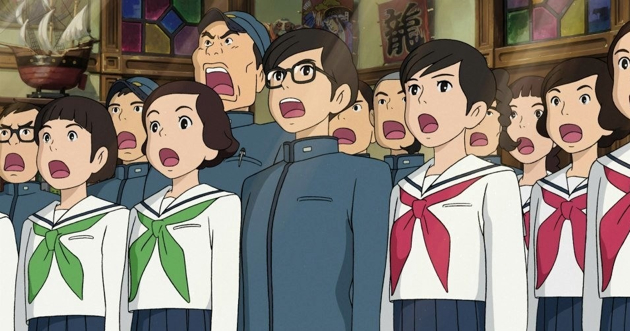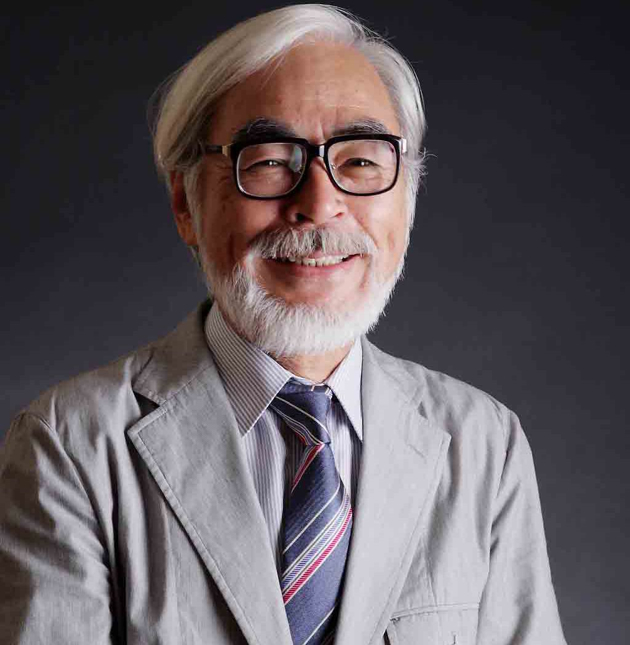There are many ways to approach your film viewing, whether by genre, by actor or origin, but one of the most popular tactics is to find a filmmaker you like and then seek out everything they have ever made. However, for one reason or another there are always a few that get away, whether due to unavailability or extra-cinematic obligations in the real world. So, this year on Full Disclosure, we are setting out to plug those gaps together.
Each month, as they are (or would be) celebrating their birthday, we will focus on the work of a single globally recognised filmmaker. Our contributors will be seeking out a film from that director's oeuvre and assessing it for the first time. Should they have seen everything directed by that individual already, they are encouraged to look deeper, seek out a film they produced, or wrote, or even acted in. Anything that will give them a wider understanding and appreciation of the director in question.
This month, as he celebrates his 73rd birthday, Team ScreenAnarchy looks at the career of Japanese master animator Miyazaki Hayao, director of such masterpieces as Nausicaa And The Valley Of The Wind, My Neighbour Totoro and Spirited Away, whose latest film, The Wind Rises, is rumoured to be his last.














Princess Mononoke (1997, Japan)
Winner of Best Film at the Japanese Academy Awards
Peter Martin - Managing Editor
What a fool I was! By natural inclination, I am not drawn to fantasy films, so I blew my chance to see Princess Mononoke in theaters when it opened in the U.S. in 1999. Later that year, I dipped my toe into Hong Kong cinema and then fully immersed myself in that giant, largely unknown pool. Subsequent to Disney making their deal with Studio Ghibli, I made sure to see Spirited Away in 2002 and was entranced. Thereafter, it's been a game of catch-up and keep-up.
Now, knowing that Miyazaki is retiring and that I only have a few "new" experiences to enjoy, I am savoring every moment. Princess Mononoke is magnificent, moving, and so, so gorgeous, even on DVD. But as I was watching it, and sinking into the fantastical world that Miyazaki and his animators created, and thinking about the serious issues that are raised, I concluded that my exploration of his work will never end. Until the end of my days, I want to visit his films over and over again - not every day, not every week, but every so often, whenever I need a reminder of everything that is beautiful and tragic and spiritual and magical in the human existence.
Lupin III: Part 2 (Episodes: Albatross - Wings of Death/Farewell My Beloved Lupin) (1980, Japan)
Ryland Aldrich - Festivals Editor
Miyazaki wrote and directed two episodes in the second Lupin III TV-series after he directed the feature film Lupin III: Castle of Cagliostro. The episodes were released as an English-dubbed compilation called Lupin's Greatest Capers and are both currently available in the US on Hulu.
My initial reaction to the two Lupin episodes was surprise at how different they are from each other (and in some respect, from Castle of Cagliostro). Albatross - Wings of Death is a farcical storyline with an idiotic villain and jokes straight out of Wile E. Coyote's playbook. But it does point to Miyazaki's fascination with airplanes and air battles as would later be seen in Nausicaa, Porco Rosso, and even The Wind Rises. The other odd element is the rather scandalous nudity in the episode that finds Fujiko without pants or underwear for virtually the whole episode.
By contrast, Farewell My Beloved Lupin (titled as Aloha Lupin by Streamline) has a much more serious storyline, although it does venture into typical Lupin identity-swapping hijinks. But the subject matter is much darker, dealing with the military industrial complex and threat of martial law from the Japanese government. This story is actually closer to Cagliostro with some characters/scenes almost lifted right out. It also features the exact robot from Laputa: The Castle in the Sky.
While neither episode stands out as essential viewing for Miyazaki fans, they do provide an interesting glimpse into the mind of a filmmaker who would go on to create some of the most imaginative works of his generation. But those Lupin rookies looking to be entertained would be better off watching the much more complete feeling Castle of Cagliostro.
Lupin III: Part 2 (Episodes: Albatross - Wings of Death/Farewell My Beloved Lupin) (1980, Japan)
Ard Vijn - Contributing writer
While I love the new set-up we have for our "lists of shame" this year, it does become difficult when the director-of-the-month turns out to be one whose work you already know pretty well. With Miyazaki-san, I can claim to have seen every single film he has a credit on (bar The Wind Rises, which is not here yet), so it is hard for me to find any shame.
Thankfully, there is always television. And I was able to see one of the two episodes which Miyazaki wrote and directed for the "Red Jacket" Lupin III series which aired in 1980. Titled Albatross - Wings of Death, it contains a surprising amount of Miyazaki goodness within its 22 minutes. In the story, Lupin tries to uncover a secret nuclear bomb facility built into - what else? - a restored old airplane. Short it may be, which obviously puts a cramp on the story, but there are a few jawdroppingly awesome action sequences in here, several parts of which were re-used later as inspiration for Nausicaa and Laputa. Also, it shows Miyazaki doing something not often seen in his work: fan service of the "naughty" variety, with Fujiko basically naked for a lot of its running time. Oo-er! But the rest is vintage Miyazaki: lots of planes, action, wit and awesomeness. If you liked Castle of Cagliostro do yourself a favor and check this one out. Hell, if you like Miyazaki or animation in general, check this one out!
Whisper Of The Heart (dir. Kondo Yoshifumi, 1995 Japan)
James Marsh - Asian Editor
Somewhat unwittingly I have managed to see almost all of the Studio Ghibli films directed by Miyazaki, but very few of the others. So for this project I pretty much tossed a coin between Only Yesterday and Whisper of the Heart, and ended up watching the latter.
As is typical in Miyazaki's work, the film's protagonist is a precocious young girl yearning for adventure and escape from the mundanity of her daily life by burying her head in literature from the school library. When Shizuku sees the same name appearing in many of the books she has been reading, she sets out to find "Seiji Amasawa", imagining him to be her Prince Charming.
In a plot development that also feels somewhat familiar within the Ghibli oeuvre, Shizuku meets a cat on the train and proceeds to follow him, despite having errands of her own to run. She is led to a strange antique shop, where Seiji happens to live, and is inspired to take a romantic and fantastical journey of her own by writing a novel about "The Baron" - a model cat that catches her eye.
The only feature film to be directed by Kondo Yoshifumi before his untimely death, Whisper of the Heart was written and produced by Miyazaki and feels perfectly at home within his body of work. While I prefer his more fantastical films, like My Neighbour Totoro and Spirited Away, the themes of first love, chasing your dreams and artistic sacrifice are beguiling and in this case shockingly prescient. Kondo died of an aneurism just a few years after finishing the film, reportedly caused by overexertion at work. Both Shizuku and Seiji let their studies suffer in their pursuit of creative expression, but no one could have foreseen to what degree Kondo was speaking for himself.
Ponyo On The Cliff By The Sea (2008, Japan)
Winner of Best Animation Film and Best Score at the Japanese Academy Awards
Ernesto Zelaya Minano - Contributing writer
Choosing a film for the first Full Disclosure of the year was a hard task. I’m a relative Miyazaki newbie, so I was pretty much spoilt for choice. I went with Ponyo, and I’m glad; it’s put a smile on my face for the rest of the day. Unlike other Miyazaki films, which always have some sort of thematic subtext, this one is refreshingly straightforward: a fish girl that wants to become human. It’s a kid’s movie through and through, but even then it’s more intelligent and well constructed than your average kiddie flick.
Ponyo can be summed up in a single word: sweet. There’s not an ounce of cynicism to be found in this movie; it’s so cheerful you can feel it coming off the screen. Little Sosuke is not some whining brat, but a precocious and respectful boy. His mother is incredibly loving and caring (and a hell of a driver as well, being able to outrun a typhoon; she earns a spot in Dom Toretto’s crew). Ponyo is an innocent, and even her father, the wizard Fujimoto, who would be the black-hearted villain in any other movie, is not really evil, just an overprotective dad. And every other character seems to be okay with the fact that their town just got flooded in a storm.
This pretty much goes without saying, but this is a beautiful movie to gawk at; the director’s attention to detail in constructing this fantasy underwater world is truly something, especially since it’s all done by hand. Ghibli animations are always superb, so you wouldn’t expect nothing less.
Yes, Ponyo is sweet and saccharine, but not in a way that made me want to rip my hair out. Miyazaki is far smarter than that, a true craftsman that knows how to tell a story. No matter your age, Ponyo is guaranteed to make you smile. However, that end credits song was a bit much; it’s got the sugar laid on so thick I was reaching for the remote in two seconds.
Ponyo On The Cliff By The Sea (2008, Japan)
Winner of Best Animation Film and Best Score at the Japanese Academy Awards
Patryk Czekaj - Contributing writer
I’m sure most people who are even vaguely interested in cinema have seen at least one picture directed by Miyazaki Hayao. His enormously influential animated features, widely regarded as masterpieces, can be seen all over the world in many different languages. Thus, I probably won’t be really original when I say that I’m a huge admirer of his work. But the fact is that when most of my elementary school friends were in the cinema watching Disney pictures, I preferred to rent Studio Ghibli VHS tapes (which were extremely hard to find here in Poland by the way) just so I could explore them alone at home.
Although some time has passed since those days, my love for Miyazaki is still unquestionable. Yet, a few days ago I realized there’s one film I never got a chance to see. I foolishly deemed it too childish. And although I found Ponyo less engaging on an emotional level than Spirited Away or Princess Mononoke, I was in awe of the omnipresent magic that fills the atmosphere with such an irresistibly positive energy. Miyazaki’s hand-drawn interpretation of a well-known tale about a goldfish that wants to become a human makes it perfectly clear – animation knows no boundaries. Ponyo transforms into a girl (my favorite scene) early in the film, but to stay that way she needs to experience love. This wonderful journey isn’t an easy one, but with the help of Sosuke she finally achieves her magical dream.
Miyazaki uses his imagination to its full potential and creates a world where even the most dangerous-looking sea creatures seem beautiful. Given its delightfully heartwarming vibe, Ponyo’s enticing powers are simply impossible to resist. It took me a few years to see the film, but now I know I’ll never doubt Miyazaki's genius ever again.
Kiki's Delivery Service (1989, Japan)
Winner of Most Popular Film at the Japanese Academy Awards
Jaime Grijalba - Contributing writer
What a gorgeous film. Maybe the last "big" Miyazaki film that I had to see. With a simple approach, this movie manages to create and show a lot of emotions and moments that go through every boy and girl around Kiki's age. Tremendous in its final moments, and intimate during the most important parts, this movie is a towering achievement, something that you don't see every day and more akin and similar to My Neighbor Totoro than any other Miyazaki/Ghibli film in the canon. I remember seeing some parts and bits of this movie on TV and liking it a lot, but seeing this fully is one of the highlights of the year so far, such beauty encompased in such a (seemingly) simple concept. I loved it.
Kiki's Delivery Service (1989, Japan)
Winner of Most Popular Film at the Japanese Academy Awards
Jim Tudor - Contributing writer
Kiki's Delivery Service isn't really about Kiki's delivery service. While the notion of a newly entrepreneurial adolescent witch-in-training dashing around town on her broom delivering items for fast cash evokes Amazon's proposed thirty minute drone delivery, this 1989 Miyazaki classic is not about the hurry of obtaining goods. Rather, it focuses upon the traditions, community and inner-strength that allow her the magic to do it.
There's that term, “inner-strength”. That vague, nebulous and cliched something-something that all animated family movie characters must find. I watched the DVD of the 1998 Disney English language version, which features John Lasseter intro-ing the film with just such a generic promise of Kiki finding her “inner-strength”. And not to spoil anything, but she does. But, the thing that elevates this is the way it's all organically wrapped up as relatable yet unexplained coming-of-age angst.
Kiki is a thirteen-year-old girl coming into her womanly “power” for the first time. That the adult symbolism of this rite-of-passage are her leaving home, riding a broomstick, and wearing a big red bow in her hair do nothing to nullify the film's all-ages appropriateness. Indeed, Kiki's Delivery Service is the first Miyazaki film I've truly loved. I've deeply appreciated several in the past, but this one fires emotionally and kinetically, gripping every audience member. Kiki and her persnickety talking cat are the kind of characters you don't want to let go of when the movie's over.
Miyazaki's love of aviation (see The Wind Rises) shines through in the many incredibly rendered shots of Kiki soaring through the air. The culmination of everything at the film's climax is absolutely perfect. This is no dark witchcraft that Miyazaki has woven, but rather rare and pure movie magic. That's what it's about.
The Story Of Yanagawa's Canals (dir. Takahata Isao, 1987 Japan)
Niels Matthijs - Contributing writer
It wasn't an easy task to plug any leftover holes in Miyazaki Hayao's oeuvre. I've seen all of his regular films (apart from his latest, which isn't available here yet), I've seen his shorts and regret to say I'm not really into series. So I dug a little deeper and found something that would kill two birds with one stone: The Story of Yanagawa's Canals is produced by Miyazaki and directed by his life-long companion Takahata Isao. And, lo and behold, there is even a DVD with English subtitles.
I'm not that big on documentaries, but Yanagawa's Canals gets a few things very right. The documentary is detailed, well-researched, insanely complete and not bogged down by too much subjectivity. While Takahata does raise a few environmental issues near the end (it is a Ghibli project after all), the documentary is mostly just about the history and geology of the canals in and around Yanagawa, looking at the way nature and humans work together to make the area inhabitable.
After almost 160 minutes of canal theory and its practical implementation in Yanagawa, I feel like I really own the material. If EA ever releases a game called Sim Canals, I'm positive I can evaluate its realism and build an extensive canal structure without a single hiccup. And that's nice, but to be honest, canals aren't really all that interesting. While the documentary goes a long way to make the subject informative as well as entertaining, the matter is just a little too dry for my taste. If you're really into canals, sluices and their geological effects you'll definitely get a kick out of this, but I was just mildly entertained. Then again, I did get through the 160 minutes without too much clock-watching, which is more than I expected up front.
Howl's Moving Castle (2004, Japan)
Nominated for the Best Animated Feature Academy Award
Shelagh M. Rowan-Legg - Contributing writer
For some reason I seem to have missed Howl’s Moving Castle during my past few years of slowly catching up on Studio Ghibli films. Seeing how I love castles, it was a big oversight on my part, so I was glad to finally see it. Because I think it might be my favourite Ghibli and Miyazaki film.
I went back to read my colleague Kurt Halfyard’s review of the film from 2005, and was surprised to find that he didn’t like it, or at least had a lot of problems with the narrative. I haven’t read the book (by Welsh author Diana Wynne Jones), and admittedly it requires perhaps a bit more concentration than other Ghibli stories, but for me the story was quite profound. Maybe it’s because I’m getting older, but Sophie’s horror at her sudden transformation from young girl to old woman was a process I can relate to. Especially in much of western society, the old (especially old women) are dismissed and barely acknowledged. I understood why Sophie ran away, and how she slowly began to make the adjustments to her now weakened body.
The film is very much about bodily transformation, and the discrepancy between body and spirit. Except that such a discrepancy is only in how others view you. With its wonderful animated characters of different form, such as a child who is seen with an old man’s beard, a scarecrow who must express emotion through small but difficult and brave acts, and a witch who wants a young heart to love her, body and spirit must find a way to align. Or perhaps, we must accept the form we have and let our spirit shine through. As I said, arguably not the best or strongest of the Ghibli films, but I already want to watch it again.
From Up On Poppy Hill (dir. Miyazaki Goro, 2011 Japan)
Winner of Best Animated Film at the Japanese Academy Awards
Pierce Conran - Contributing writer
Having seen all of Miyazaki Hayao’s films (save for his latest The Wind Rises), I found myself in a situation that is likely to be shared by many of my fellow writers here on ScreenAnarchy. Looking at the rest of the Studio Ghibli catalogue, the only films I haven’t seen were those directed by his son Goro. Though he initially wanted to direct the project himself, Miyazaki wasn’t really involved with Tales From Earthsea so that left me with Goro’s sophomore film From Up On Poppy Hill, which his father wrote.
Set in the 1960s, as Japan prepares for the Tokyo Olympiad, in a charming seaside Yokohama neighborhood, From Up On Poppy Hill stands as one of Miyazaki’s most understated offerings. With the stakes so low and lead characters that are almost too perfect, I was not immediately immersed the way I normally am by Ghibli. That’s not to say that it wasn’t a thoroughly pleasant ride, but it took some layering in the final stretch to finally give the film some wings. Family histories bubble up to the surface to catch up with the protagonists and a brief interlude to Tokyo is required to resolve the other narrative, with both strands coming to a satisfying conclusion during the same climactic afternoon.
Though the recurring presence of boats brings to mind the perpetually in motion elements of his past works, From Up On Poppy Hill does not display the same ambition or wizardry of other Miyazaki films. But in the end this doesn’t work against it, as the final result’s mellifluous tone may make you wish for a simpler, if admittedly idealized past.
From Up On Poppy Hill (dir. Miyazaki Goro, 2011 Japan)
Winner of Best Animated Film at the Japanese Academy Awards
Simon Cocks - Contributing writer
I spent last year catching up on any and all of Miyazaki Hayao’s directorial accomplishments that I could get my hands on. I’ve now seen every feature to his name except for The Wind Rises, so for this assignment I watched From Up On Poppy Hill, directed by Miyazaki’s son Gorō but written by the man himself.
It’s a charming little tale that feels perhaps a bit more conventional than I expected but that is considerably more cohesive than Gorō’s previous film, Tales From Earthsea. It primarily follows a pair of young schoolchildren living in Japan’s Port of Yokohama. Much of it is rather wonderfully drawn everyday life, but the whole thing does head in a more complicated direction when it gets going.
Like so many of Miyazaki’s great films, it captures the essence and atmosphere of youth without ever treating it childishly. I like how the story flows, even if I am a little disappointed to see it veer towards predictability as it progresses. The animation is, unsurprisingly, stunning. There’s a delicate expressiveness to the visuals of From Up On Poppy Hill and it makes for a very engaging watch. It helps that it has a very lively soundtrack too.
By watching so many Studio Ghibli features in a relatively short space of time, I feel the urge to compare this to my favourites. I should probably resist that desire as I’m afraid From Up On Poppy Hill doesn’t really match up to a lot of Ghibli’s most impressive offerings. I don’t think it’s one of the studio’s best but it is a sweet story conveyed effectively, an enjoyable film about being young, self-sufficient and driven.

Around the Internet
Recent Posts
THE COPENHAGEN TEST Review: Under Surveillance
Friday One Sheet: The Best Posters of 2025
THE PLAGUE Review: Zero for Conduct Again
Leading Voices in Global Cinema
- Peter Martin, Dallas, Texas
- Managing Editor
- Andrew Mack, Toronto, Canada
- Editor, News
- Ard Vijn, Rotterdam, The Netherlands
- Editor, Europe
- Benjamin Umstead, Los Angeles, California
- Editor, U.S.
- J Hurtado, Dallas, Texas
- Editor, U.S.
- James Marsh, Hong Kong, China
- Editor, Asia
- Michele "Izzy" Galgana, New England
- Editor, U.S.
- Ryland Aldrich, Los Angeles, California
- Editor, Festivals
- Shelagh Rowan-Legg
- Editor, Canada


